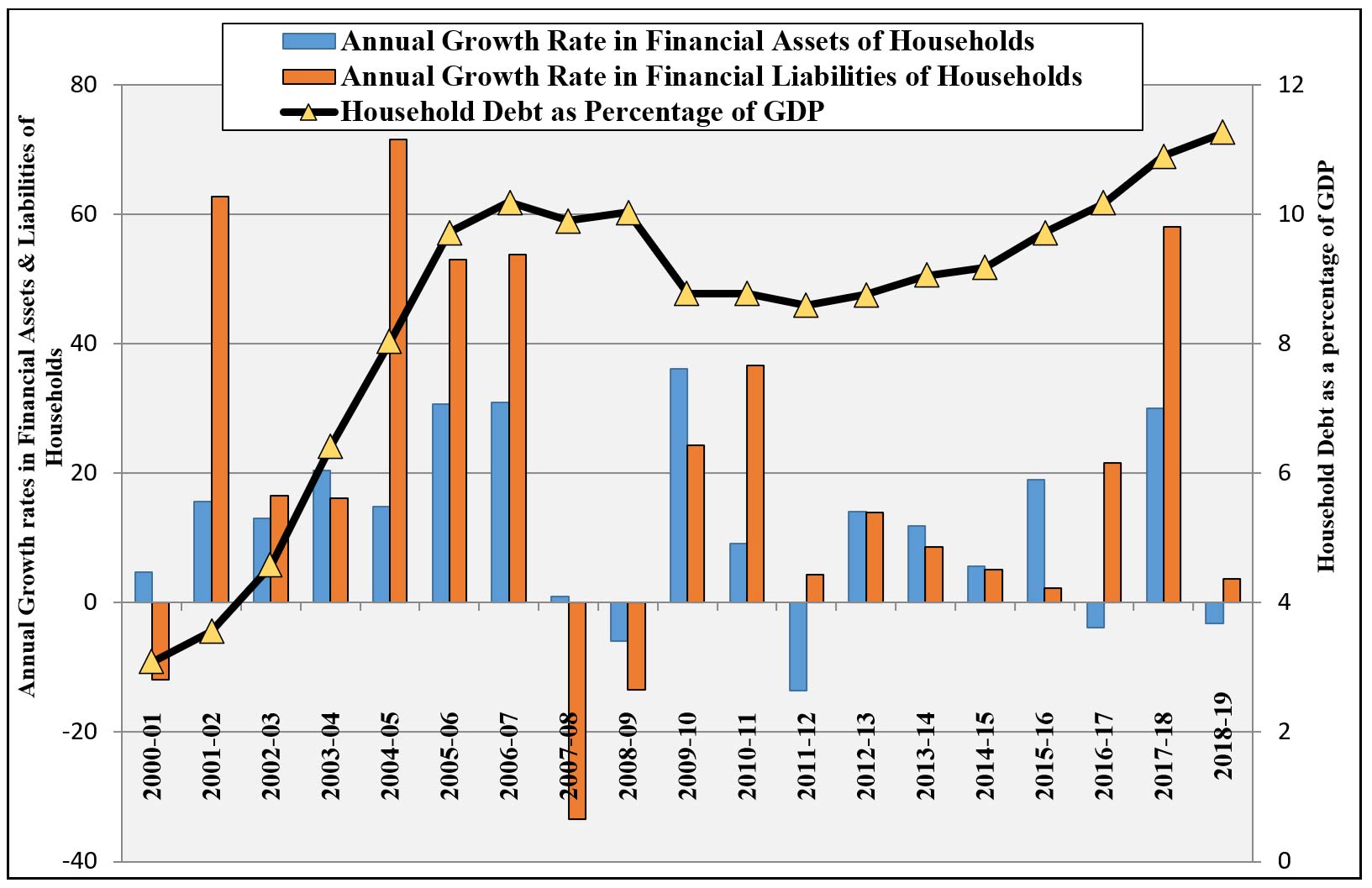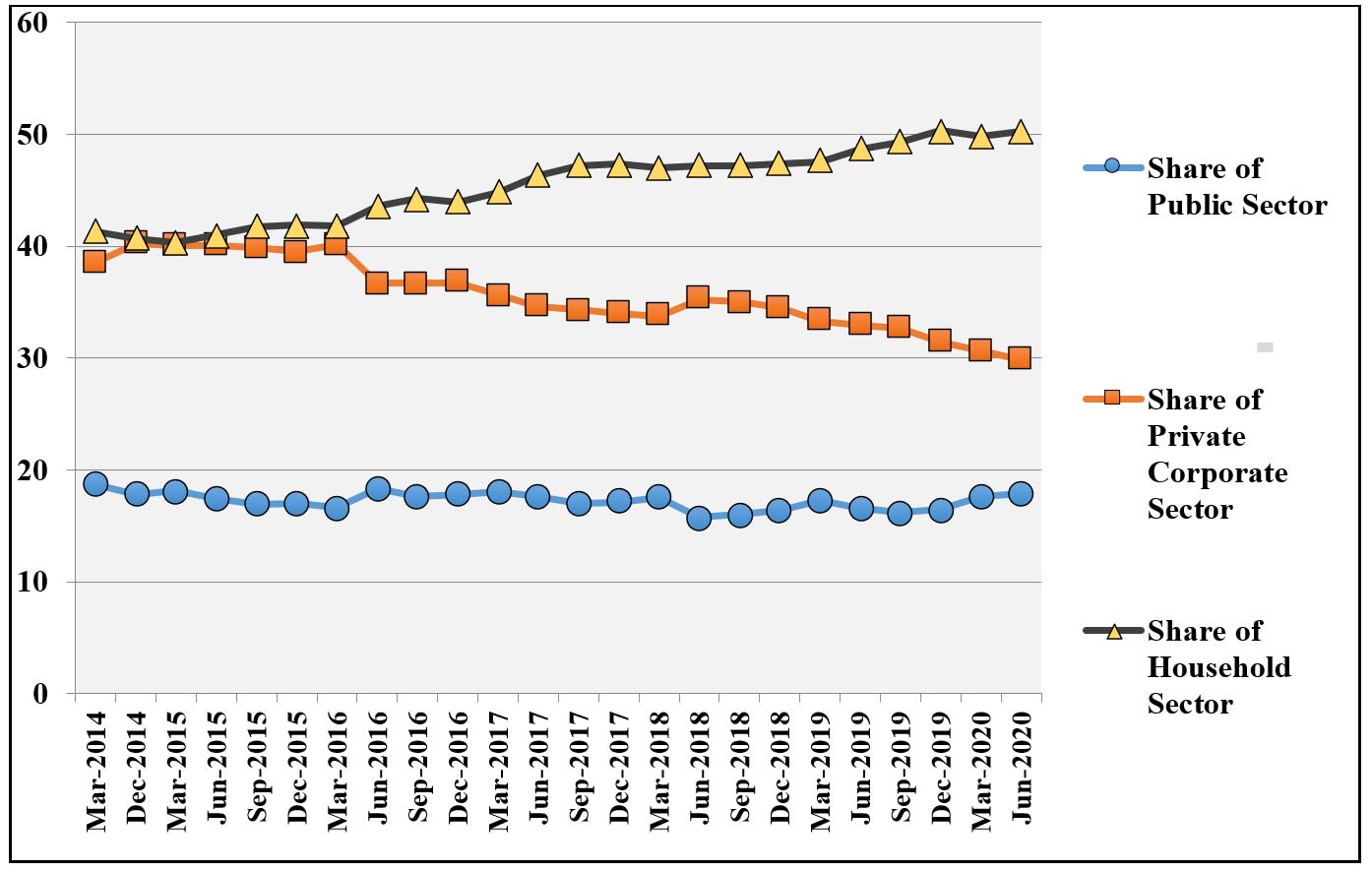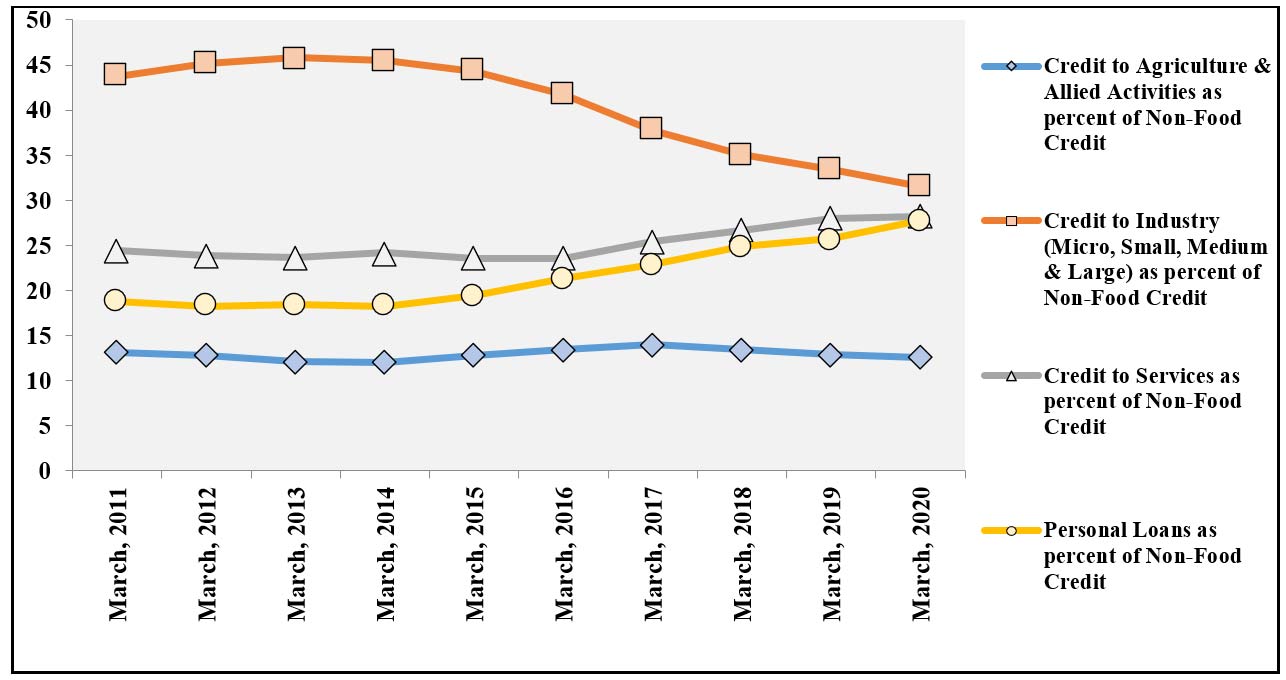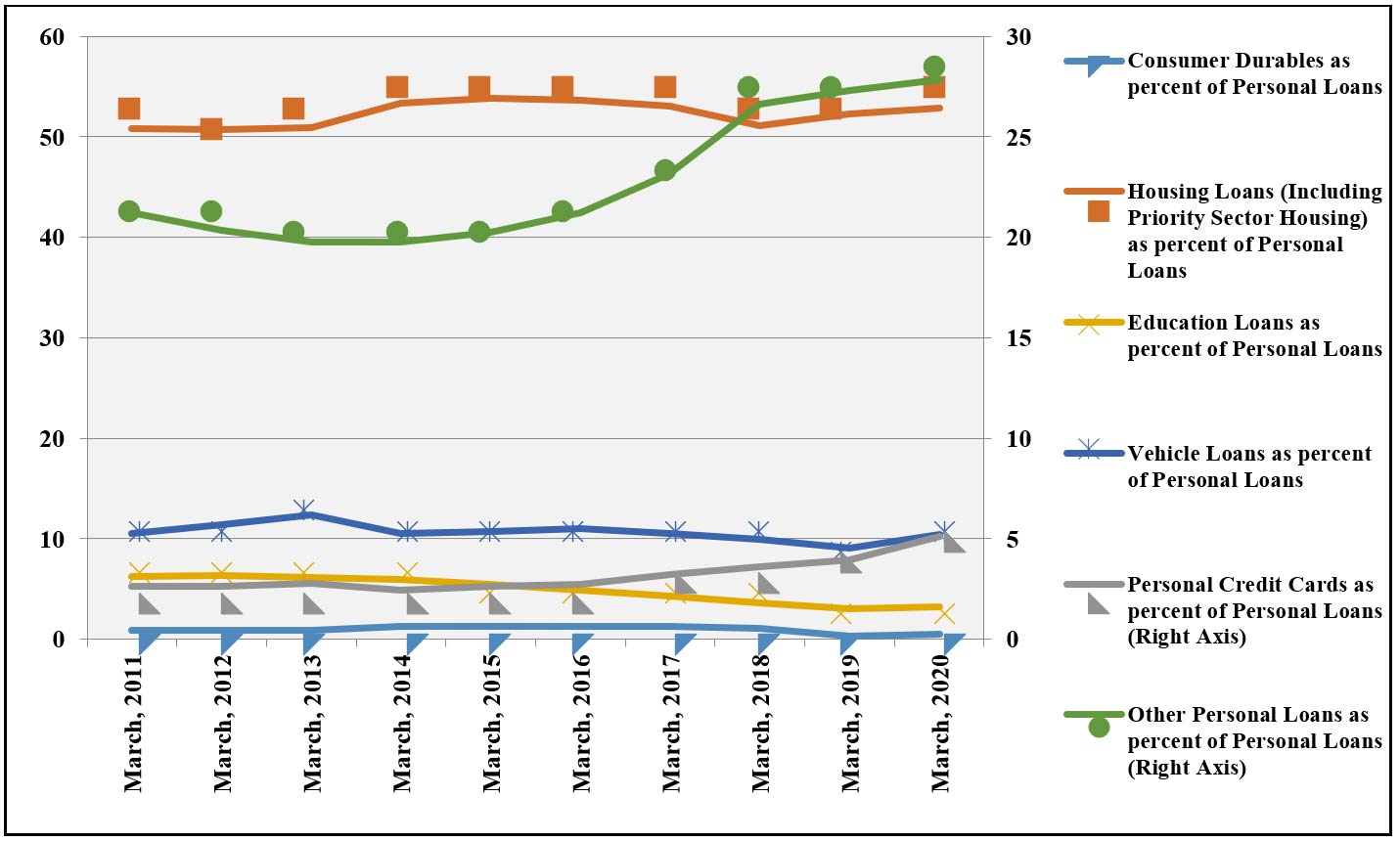The Covid-19 crisis and the subsequent recession has brought about a shift in financial savings; households have cut back on consumption and reduced their demand for credit, and banks tightened lending due to asset quality concerns. Looking at the trends in deployment of credit across different sectors of the economy, in this post Isha Gupta highlights the rising share of household credit in the form of credit cards and other personal loans, and its implications for economic recovery.
The unprecedented outbreak of the Covid-19 pandemic and the resultant lockdowns on domestic movement severely disrupted supply chains, blocked manufacturing activities and dislocated labour. As these disruptions were felt in the form of income and demand-side shocks, it depressed aggregate demand further, with the postponement of non-essential consumption. This triggered an extensive crisis at a time when the Indian economy had already been undergoing a lacklustre performance. Unlike past crises, the significantly lower financial and physical savings at the outset of the lockdown period made it difficult for Indian households to absorb income losses.
Debt, savings and liabilities of Indian households
The prolonged downward trend of the Indian economy during the 2010s at first stemmed from the weakening of domestic demand conditions in the home market owing to a shrinking consumption base. This overturned the euphoria of the 2000s, which was steered by all the primary engines of growth – such as consumption and private investment – and marked the beginning of a sharp structural slowdown.
When we consider the data on household debt to GDP ratio from FY2000-01 to FY2018-19, we observe a commonality in how this ratio peaked across growth cycles during the decades following 2000 and 2010 (Figure 1). This ratio, which had previously peaked at 10.2% in the high-growth phase of 2003-2008, reached 10.9% in the low-growth years of 2015-2018. As of March 2020 and March 2021, this figure stood at 12.4 and 14.5% of GDP respectively. Parallelly, the growth rate of financial liabilities of households, which hit a high of 53% in the 2000s, also increased significantly to 58% in the post-demonetisation period.
Figure 1. Household debt as a percentage of GDP and growth rates of household financial assets and liabilities
However, as households accumulated their financial liabilities, the 2000s also witnessed a continued upward trajectory in households’ savings, together with an improved physical investment rate1 that reached an average of 23.8% and 12.7% of GDP respectively (Mohan 2008) and economic growth which averaged 9% in real terms during this period. In contrast, a feature of the 2010s has been the incessant decline in all forms of household savings since FY2011-12, of which households’ fixed investment (particularly household investment in ‘Dwellings and Other Building Structures’2) has faced a steep decline (Table 1).
Table 1. Household savings
Since FY 2011-12, the Indian economy has experienced a drastic downfall in the fixed investment rate, which has been languishing at around 30% of GDP. Taking into consideration the institutional break-up of fixed investment, while private corporate investment remained fairly sluggish at approximately 11.5% of GDP, it is the steep decline in households’ fixed investment that explains most of the deterioration in overall fixed investment during this period.
Slower growth in the purchase of houses is also reflected in stalled real estate projects, which have led to a build-up of unsold inventory over the years, which in turn has subdued the rate of growth of housing prices since FY2015-16 (Reserve Bank of India (RBI), 2019a, 2019b). Furthermore, as household savings in physical assets nosedived, neither household savings in gold and silver, nor net household financial savings rose as a proportion of GDP, which implies that these resources were typically expended on consumption.
Households’ financial liabilities rose sharply since FY2011-12 during the post-demonetisation years because of a sudden drop in the weighted average lending rates (WALR)3 of banks in an environment of surplus liquidity (Table 2).




















0 Comments